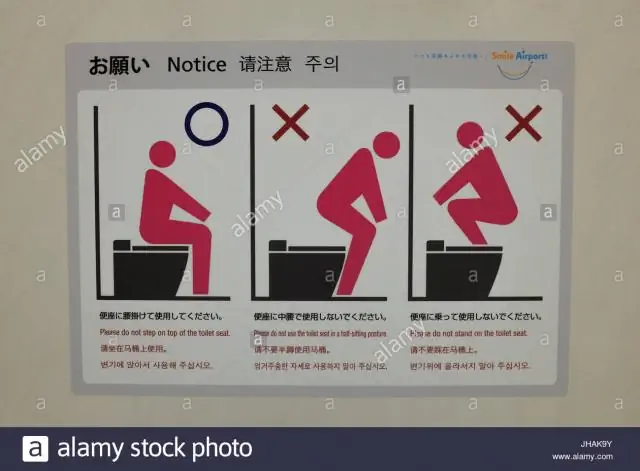- Author Rachel Wainwright [email protected].
- Public 2023-12-15 07:39.
- Last modified 2025-11-02 20:14.
Corglikard
Korglikard: instructions for use and reviews
- 1. Release form and composition
- 2. Pharmacological properties
- 3. Indications for use
- 4. Contraindications
- 5. Method of application and dosage
- 6. Side effects
- 7. Overdose
- 8. Special instructions
- 9. Application during pregnancy and lactation
- 10. In case of impaired renal function
- 11. For violations of liver function
- 12. Use in the elderly
- 13. Drug interactions
- 14. Analogs
- 15. Terms and conditions of storage
- 16. Terms of dispensing from pharmacies
- 17. Reviews
- 18. Price in pharmacies
Latin name: Corglycard
ATX code: C01AX
Active ingredient: Lily of the valley leaves glycoside (Convallariae foliorum glycoside)
Producer: Experimental plant GNTSLS, LLC (Ukraine)
Description and photo update: 2018-25-10
Prices in pharmacies: from 76 rubles.
Buy

Corglikard is a drug used in the treatment of chronic heart failure.
Release form and composition
The dosage form of Korglikard is a solution for intravenous (intravenous) administration: transparent, somewhat yellowish (in 1 ml ampoules, 10 ampoules in a cardboard box or 1 blister strip of 10 ampoules).
Composition of 1 ml solution (1 ampoule Korglikard):
- active substance: korglikon - 0.6 mg;
- auxiliary components: chlorobutanol hydrate, water for injection.
Pharmacological properties
Pharmacodynamics
Korglikard is a purified preparation of lily of the valley (leaves) and its varieties, a cardiac glycoside. It has a positive inotropic effect due to the direct inhibitory effect of Na + / K + ATP-ase on the membranes of cardiomyocytes. As a result of using the drug, the intracellular content of sodium ions increases and, accordingly, potassium ions - decreases. An increased content of sodium ions leads to the activation of sodium / calcium metabolism, an increase in the content of calcium ions and, as a consequence, an increase in the force of myocardial contraction.
Due to the increase in myocardial contractility, the end systolic and end diastolic volumes of the heart decrease, the stroke volume of blood increases, which, combined with an increase in myocardial tone, leads to a decrease in its size and a decrease in myocardial oxygen demand.
Other effects of Korglikard:
- negative chronotropic effect; due to an increase in the sensitivity of cardiopulmonary baroreceptors, a decrease in excessive sympathetic activity is observed;
- antiarrhythmic action; due to an increase in the activity of the vagus nerve, lengthening of the affective refractory period and a decrease in the speed of impulses through the atrioventricular node. This effect is enhanced by sympatholytic action and direct action on the atrioventricular node;
- negative dromotropic effect; manifests itself in an increase in the refractoriness of the atrioventricular node;
- positive batmotropic action; against the background of atrial fibrillation, Korglikard helps to slow down ventricular contractions, lengthens diastole, improves intracardiac and systemic hemodynamics; the effect is manifested in subtoxic and toxic doses;
- direct vasoconstrictor action; most clearly manifested in patients with no congestive peripheral edema;
- indirect vasodilating action; manifests itself as a response to an increase in the minute blood volume and a decrease in excessive sympathetic stimulation of vascular tone; usually prevails over direct vasoconstrictor action, due to which the total peripheral vascular resistance is reduced.
The effect of Korglikard after intravenous administration begins in 3-5 minutes, reaching maximum values in 25-30 minutes.
Pharmacokinetics
Korglikon binds to plasma proteins to a small extent.
The substance practically does not undergo biotransformation in the liver and is excreted in the urine unchanged.
Indications for use
- chronic heart failure II - IV functional class in patients with clinical manifestations (along with other drugs);
- atrial flutter / atrial fibrillation in the tachysystolic form of a chronic and paroxysmal course (especially against the background of concomitant chronic heart failure).
Contraindications
Absolute:
- atrioventricular block II degree;
- glycosidic intoxication;
- intermittent complete blockade;
- Wolff-Parkinson-White syndrome;
- pregnancy and the period of breastfeeding;
- individual intolerance to any component of the drug.
Relative (Korglikard is prescribed under medical supervision after assessing the benefit / risk ratio):
- atrioventricular block I degree;
- the likelihood of unstable conduction along the atrioventricular node;
- cardiac asthma in combination with mitral stenosis (in patients with no atrial fibrillation in the tachysystolic form);
- sick sinus syndrome without a pacemaker;
- hypoxia;
- burdened history of attacks of Morgagni - Adams - Stokes;
- arteriovenous shunt;
- isolated mitral stenosis with a rare heart rate;
- hypertrophic subaortic stenosis;
- unstable angina;
- acute myocardial infarction;
- heart failure with impaired diastolic function (heart amyloidosis, restrictive cardiomyopathy, cardiac tamponade, constrictive pericarditis);
- extrasystole;
- pulmonary heart;
- alkalosis;
- hypothyroidism;
- electrolyte disturbances, including hypokalemia, hypercalcemia, hypomagnesemia, hyponatremia;
- obesity;
- myocarditis;
- renal / hepatic impairment;
- severe dilatation of the cavities of the heart;
- elderly age.
Instructions for the use of Korglikard: method and dosage
Korglikard is injected intravenously slowly over 5-6 minutes (after dilution in 20% or 40% dextrose solution of 10-20 ml).
Frequency rate of application - 1-2 times a day (the interval between injections is from 8 to 10 hours).
Recommended single dose:
- children 2-5 years old: 0.2-0.5 ml;
- children 6-12 years old: 0.5-0.75 ml;
- adults: 0.5-1 ml.
Higher adult doses: single - 1 ml (1 ampoule Korglikard), daily - 2 ml.
Side effects
Adverse reactions of Korglikard are usually associated with hypersensitivity to cardiac glycosides or overdose.
Possible violations:
- nervous system and sensory organs: delirious psychosis, decreased visual acuity, sleep disturbances, drowsiness, confusion, dizziness, headache;
- cardiovascular system: AV block, arrhythmia;
- digestive system: anorexia;
- hematopoietic organs: nosebleeds, thrombocytopenic purpura, thrombocytopenia;
- others: allergic reactions.
Overdose
The main symptoms are:
- cardiovascular system: AV block, ventricular paroxysmal tachycardia, nodal tachycardia, ventricular premature beats (often polytopic ventricular premature beats, bigeminy), atrial flutter / atrial fibrillation;
- digestive system: intestinal necrosis, vomiting, anorexia, abdominal pain, diarrhea;
- nervous system and sensory organs: manic-depressive syndrome, neuritis, perception of objects in an enlarged / reduced form, staining of visible objects in a yellow-green color, flashing flies in front of the eyes, decreased visual acuity.
Therapy: cancellation of Korglikard, administration of antidotes (ethylenediaminetetraacetic acid, unitiol), symptomatic treatment. With hypokalemia, potassium chloride is administered intravenously. Class I drugs (lidocaine, phenytoin) are indicated as antiarrhythmic agents. With AV blockade and severe bradycardia, m-anticholinergics are prescribed. The introduction of beta-adrenostimulants is dangerous, since it is possible to potentiate the arrhythmogenic effect of Korglikard. In cases of complete transverse blockade with attacks of Morgagni - Adams - Stokes, temporary pacing is indicated.
special instructions
Factors that increase the risk of intoxication: hypokalemia, hypomagnesemia, hypercalcemia, hypernatremia, hypothyroidism, severe dilatation of the heart cavities, cor pulmonale, myocarditis, obesity, old age.
In patients with severe mitral stenosis and normo- or bradycardia, heart failure may occur (due to a decrease in diastolic filling of the left ventricle).
By increasing the contractility of the right ventricular myocardium, the drug leads to a further increase in pressure in the pulmonary artery system, which can cause pulmonary edema or exacerbation of left ventricular failure.
For patients with mitral stenosis, Corglikard is prescribed when right ventricular failure is attached or in cases of atrial fibrillation.
In WPW syndrome, korglikon, by reducing AV conduction, promotes impulses to bypass the AV node through accessory pathways, which can cause paroxysmal tachycardia. As one of the methods to control the level of digitalization, monitoring of the plasma concentration of a substance can be used.
Application during pregnancy and lactation
According to the instructions, Corglikard is not prescribed for women during pregnancy / lactation.
With impaired renal function
Renal failure: therapy is carried out with caution.
For violations of liver function
Liver failure: therapy is performed with caution.
Use in the elderly
Corglikard is prescribed for elderly patients under medical supervision.
Drug interactions
Possible interactions:
- adrenergic agonists (ephedrine hydrochloride, epinephrine hydrochloride or norepinephrine hydrotartrate, selective beta-adrenergic agonists): an increase in the likelihood of cardiac arrhythmias;
- chlorpromazine and other phenothiazine derivatives: reducing the effect of Korglikard;
- anticholinesterase drugs: increased bradycardia (it can be weakened / eliminated by atropine sulfate);
- glucocorticosteroids: an increase in side reactions of korglikon (associated with hypokalemia caused by prolonged use of glucocorticosteroids);
- diuretics: enhancement of the effects of korglikon (dosage adjustment of drugs may be required; periodically, potassium-sparing diuretics may be prescribed to eliminate hypokalemia, but hyponatremia may occur);
- potassium preparations: reducing the side reactions of Korglikard;
- calcium preparations (parenteral use): increased cardiotoxic effects (the combination is dangerous);
- disodium salt of ethylenediaminetetraacetic acid: reducing the toxicity and effectiveness of corglikon;
- corticotropin preparations: enhancing the effects of korglikon;
- xanthine derivatives: the occurrence of cardiac arrhythmias;
- sodium adenosine triphosphate: the combination is not recommended;
- ergocalciferol: increased effects of korglikon (due to the development of hypercalcemia);
- narcotic analgesics: the development of hypotension;
- paracetamol: reducing the excretion of corglikon by the kidneys.
Analogs
Korglikard's analogues are: Adonis-bromine, Doppelgerts Melissa, Korglikon, Cardiovalen.
Terms and conditions of storage
Store in a place protected from light at temperatures up to 25 ° C. Keep out of the reach of children.
The shelf life is 3 years.
Terms of dispensing from pharmacies
Dispensed by prescription.
Reviews of Korglikard
According to a few reviews, Korglikard is an effective drug that does not lead to the development of allergic reactions and does not affect blood pressure.
Price for Corglikard in pharmacies
The approximate price for Korglikard (10 ampoules of 1 ml) is 74-93 rubles.
Corglikard: prices in online pharmacies
|
Drug name Price Pharmacy |
|
Korglikard 0.6 mg / ml solution for intravenous administration 1 ml 10 pcs. RUB 76 Buy |
|
Korglikard solution for intravenous injection 0.06% 1ml 10 pcs. RUB 90 Buy |

Anna Kozlova Medical journalist About the author
Education: Rostov State Medical University, specialty "General Medicine".
Information about the drug is generalized, provided for informational purposes only and does not replace the official instructions. Self-medication is hazardous to health!






